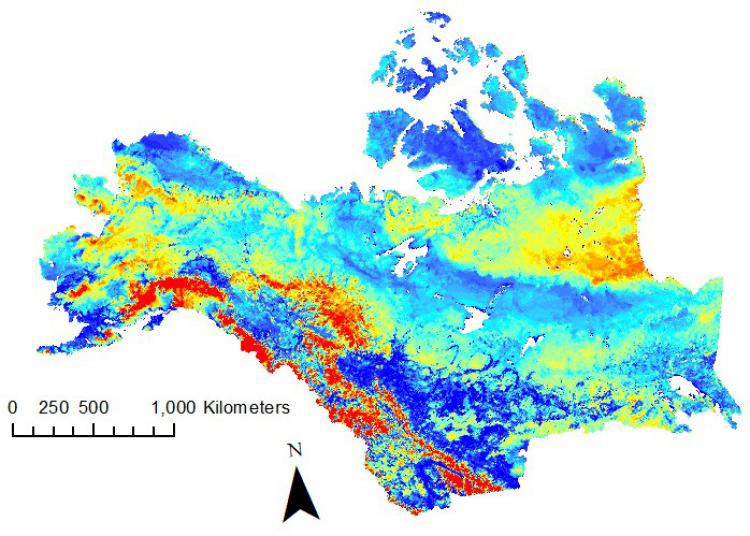Snow cover strongly influences the energy budget and regional climate of higher latitudes and elevations. The seasonal freeze-thaw (FT) transition is coupled with snowpack melt dynamics and impacts ecological processes, surface-water mobility, and the energy budget. However, understanding of the seasonal transition in the Arctic and boreal region (ABR) is constrained by the sparse distribution of regional weather stations and in-situ observations. NPS researchers addressed these limitations by combining synergistic observations from overlapping satellite optical-infrared and microwave sensor records to quantify the regional patterns and seasonal progression in wet snow conditions across Alaska and western Canada. The integrated satellite record included twice-daily (1:30 AM/PM) retrievals of landscape FT status at 6-kilometer resolution from the Advanced Microwave Scanning Radiometer (AMSR2) and 500-meter resolution snow cover extent (SCE) observations from the Moderate Resolution Imaging Spectroradiometer (MODIS). The MODIS SCE data were used with the AMSR2 FT record to define snow covered areas under transitional FT conditions (AM frozen and PM non-frozen).
The spring wet snow duration (days) was derived from the combined MODIS SCE and AMSR FT record on a calendar year basis for each grid cell as the number of days with a wet snow flag. Additional satellite and surface weather station observations were used to characterize snow albedo and seasonal climate changes during the spring thaw transition. These combined observations reveal that the onset of spring wet snow conditions coincides with an approximate 19% decline in surface albedo that extends over a 7- to 21-week snowpack depletion period. The lower snow albedo enhances surface net radiation by ~74% (9-10 megajoule per meter per day) relative to colder dry snow conditions, thus accelerating snowmelt and surface warming. These results provide improved monitoring of regional snow cover conditions important to transportation, wildlife, and subsistence in the ABR. Findings also contribute to better understanding of snow albedo feedbacks to the Arctic amplification of global warming and the representation of these processes in Earth system models.
http://iopscience.iop.org/article/10.1088/1748-9326/aacf72/pdf

Arctic and boreal region spring wet snow duration, in days, for 2016, derived from combined MODIS SCE and AMSR FT satellite observations. Area depicted includes the artic and boreal regions that lie within Alaska and western Canada, from the Bering Sea and Hudson Bay (west to east) and the Arctic Ocean to the US-Canadian border (north to south).

